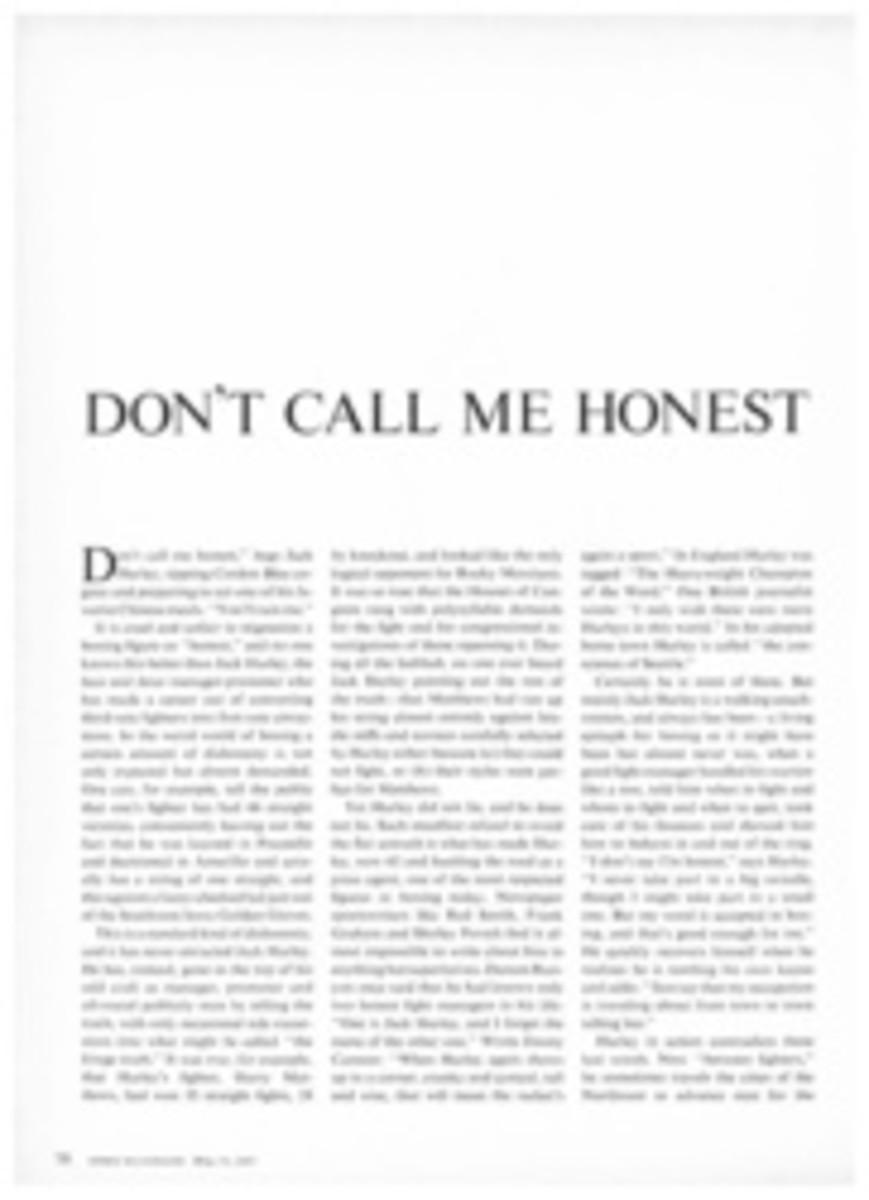
An outdoor track quiz to excite the memory and increase the knowledge of the fans and the armchair experts
? How are ties decided in track events?
•If there is a tie between two competitors in a qualifying heat, both move up to the final. If a tie for first place occurs in a final, the referee decides whether a runoff is practicable. Other places remain as a tie.
? a) What five events make up the pentathlon and b) which of these five is not also part of the decathlon?
•a) The five events in the pentathlon are running broad jump, javelin throw, 200-meter run, discus throw and 1,500-meter run. b) There is no 200-meter run in the decathlon. Decathlon events are 100-meter run, running broad jump, shotput, running high jump, 400-meter run, 110-meter hurdles, discus throw, pole vault, javelin throw and 1,500-meter run.
? If all three watches timing a race disagree, what is the official time for the race?
•The watch recording the middle time (not the average of the three) is considered to show the official time.
? Two runners in a 100-yard dash finish in an apparent tie. A photo-finish device is available but the judges do not examine the picture, and declare Runner A the winner. Does Runner B have an appeal?
•Yes. A competitor may ask the chief judge to review the photograph with the other judges. If the judges fail to agree, the picture is shown to the referee, who makes the final decision.
? Runner A falls at the finish of a dash with his body halfway across the line. Runner B finishes an instant behind. Who is the winner?
•Runner B is the winner. A runner who falls is not considered to have finished the race unless his entire body crosses the line.
? Would an automobile ever be considered an essential piece of equipment in a track race?
•Yes, For distance races of 10,000 meters or over, the rules call for vehicles to be on hand to transport athletes who become "fatigued, injured or unable to continue."
? A runner reports to the starting clerk without shoes. Is he disqualified?
•No. Athletes may compete in bare feet or with a single shoe if they wish.
? How long is a pole vault runway?
•The length of a pole vault runway is unlimited. A suggested minimum is 147 feet 6 inches, but this is not required.
? In a 220-yard hurdles race, Runner A finishes first but knocks down the last hurdle Runner B finishes second without hitting any hurdles. Who is the winner?
•Runner A is the winner. There is no penalty for knocking any hurdle down, provided the runner has gone over each hurdle.
? Runner A runs a mile under the world record time of 3:54.5 with a strong wind at his back. Would this be a new record?
•Yes. Wind velocity is not considered an aid in races over 220 yards. In races on straight courses, an aiding wind of over 4½ mph negates a record time.
? When does an athlete forfeit his amateur standing?
•There are many infractions for which an amateur can be declared a professional. Some of the reasons include: 1) entering a competition for money, 2) selling prizes received in competition, 3) entering under a false name, 4) competing against a professional and 5) coaching a sport for pay.
? Is a runner penalized for a false start?
•There is no penalty for the first false start. The starter will fire his pistol to recall the runners. If there is a second false start by any competitor, the starter will then disqualify him from the race.
? On a turn, Runner A steps out of his lane and crosses in front of Runner B. Is this allowed?
•This situation is a judgment call on the part of the referee. If the referee rules that Runner A has not interfered with another runner or with the normal conduct of the race, he is not penalized for stepping out of his lane.
? In the shot put, Athlete A uses his personal shot. Athlete B then desires to use the same shot. Will he he allowed to use it?
•Yes. Implements belonging to individuals, providing they meet specifications, may be used in an event. However, the shot would then be considered as part of the meet equipment and be available to any contestant.
? A pole vaulter clears the crossbar, hut the pole falls under the bar. Is this a legal vault?
•No. If a vaulter's pole passes under the crossbar, the vault will be recorded as a miss.
? How many barriers must a runner clear in the 3,000-meter steeplechase?
•He must clear a total of 28 hurdles, each 3 feet high, and seven water jumps, each 2 feet 6 inches deep.
? An athlete throws the javelin. While in mid-air, the javelin cracks in half. Is this a legal throw?
•No. If a javelin breaks in flight, provided the throw was made legally, the attempt will not be counted as a trial.
? The current mile record is 3:54.5, set by Herb Elliott of Australia, Aug. 6, 1958 at Dublin, Ireland. How does this differ from the first recorded mile record?
•Elliott's time was more than a minute better than the first recorded mile record. The first listed one-mile record is 4:56.0, set by Charles Lawes of Great Britain on March 5, 1864.
ILLUSTRATION

